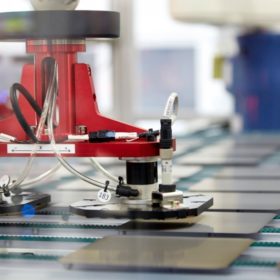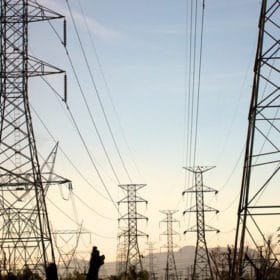Bushfire-affected South Australia homeowners to get free sonnen batteries
The state government has partnered with the German energy storage company to offer 188 families locally assembled sonnenBatteries as they rebuild their homes.
Oil and gas giants Shell and Total get serious about solar
Total acquired 50% of India’s Adani Group’s solar portfolio for $510m and Shell is building its first large-scale solar farm, a 120-MW effort in Australia.
Generate lands more than $1 billion for renewable infrastructure
Jigar Shah, renewable energy legend, strikes again. Generate added Sunrun CEO Lynn Jurich and NYSERDA’s Richard Kauffman to its board.
Dan Shugar, NEXTracker CEO, riffs on tracker innovation, bifacial panels and getting acquired by Flex
While trackers for solar panels might seem a bit mundane, once you stumble into CEO Dan Shugar’s reality distortion field, trackers become kind of sexy.
Battery roundup: funding for zinc-based storage, improved lithium-ion, new solid-state batteries
Venture capital is still flowing to energy storage startups and the march to improve a wide variety of battery chemistries continues.
Enphase is riding high
Enphase’s Q3 results show a company that has turned its fortunes around, with revenues more than doubling and high profitability, but questions remain around growth potential.
Jinko and REC petition for review of Hanwha patent
The manufacturers are pushing back on the basis for the suit that their Korean/German rival has launched, arguing that there is evidence the innovations they refer to were either not new or were obvious steps forward.
More than a half million pumped-hydro sites for a world of 100% renewables
A recent Australian National University study shows that newly developed geographic information system algorithms can identify prospective sites for off-river pumped hydro projects throughout the world. The researchers, who identified around 530,000 potential sites, said pumped-hydro installations could enable large-scale energy time-shifting, as well as a range of ancillary services such as frequency regulation, which could help to integrate high levels of PV and wind into electricity systems.
Rise of bifacial lifts profits for the world’s tracker companies
Things are hotting up in the tracker world as the desire to squeeze down the price per Watt of solar power intensifies. And the rise of the trackers is attracting some well-known businesses to buy their way into the field.
U.S. utilities test distributed energy management
Distributed energy management systems can capture added value from solar and storage by shaving peak loads, providing grid services, and deferring grid investments. Utilities testing such systems have shared their lessons learned, while Western Australia leapfrogs ahead.













